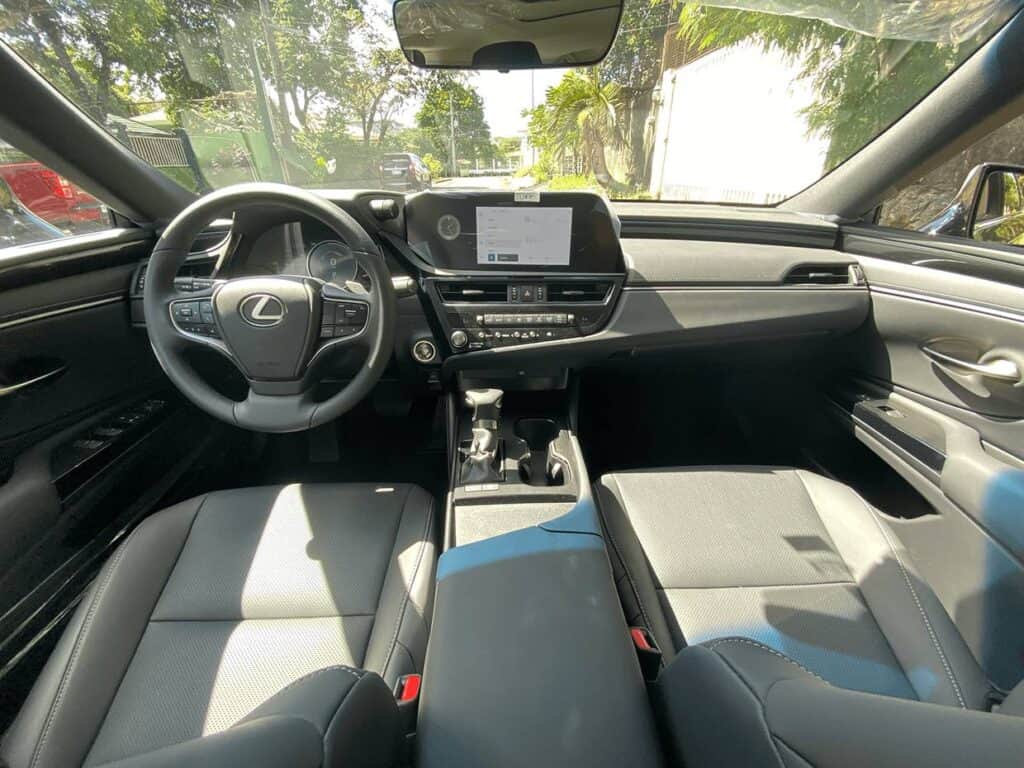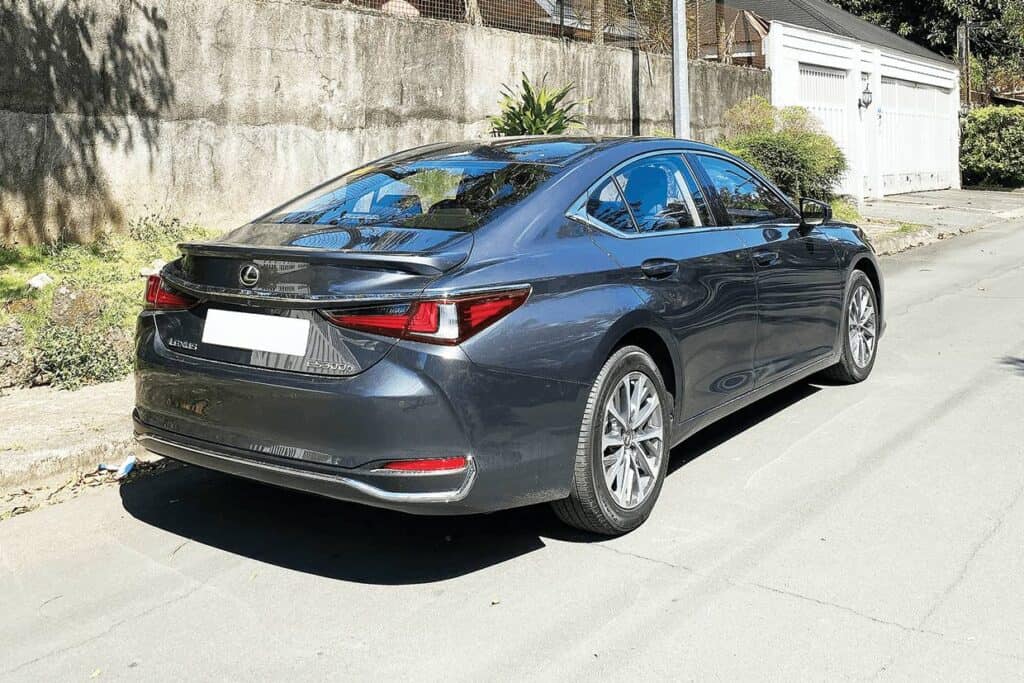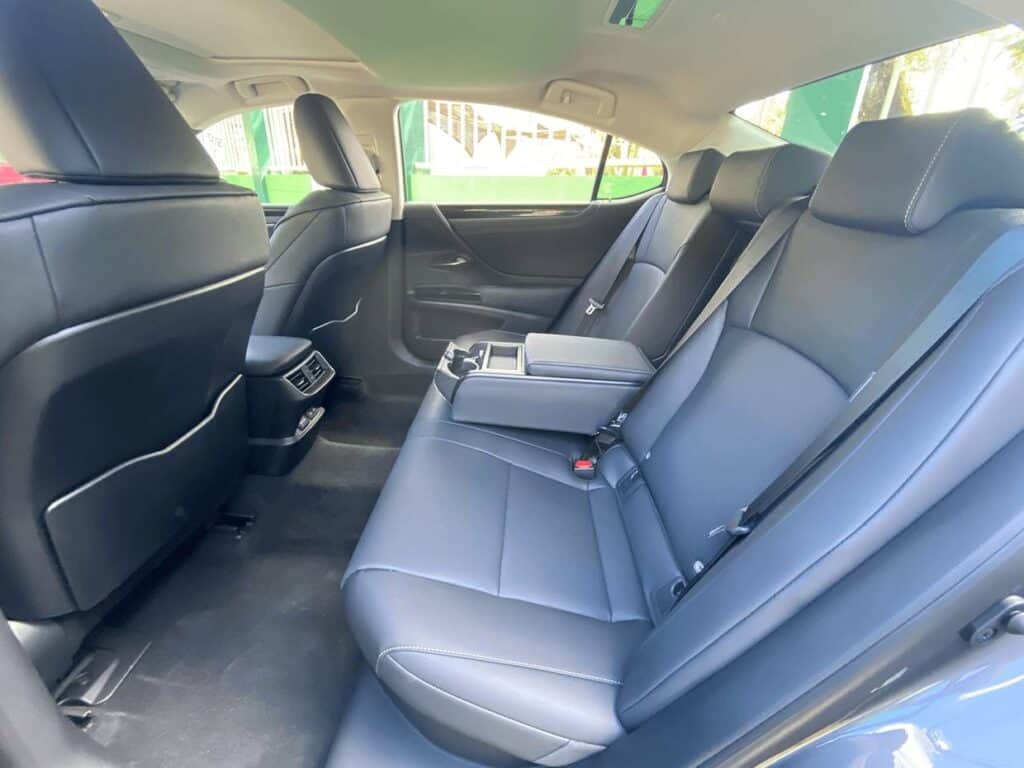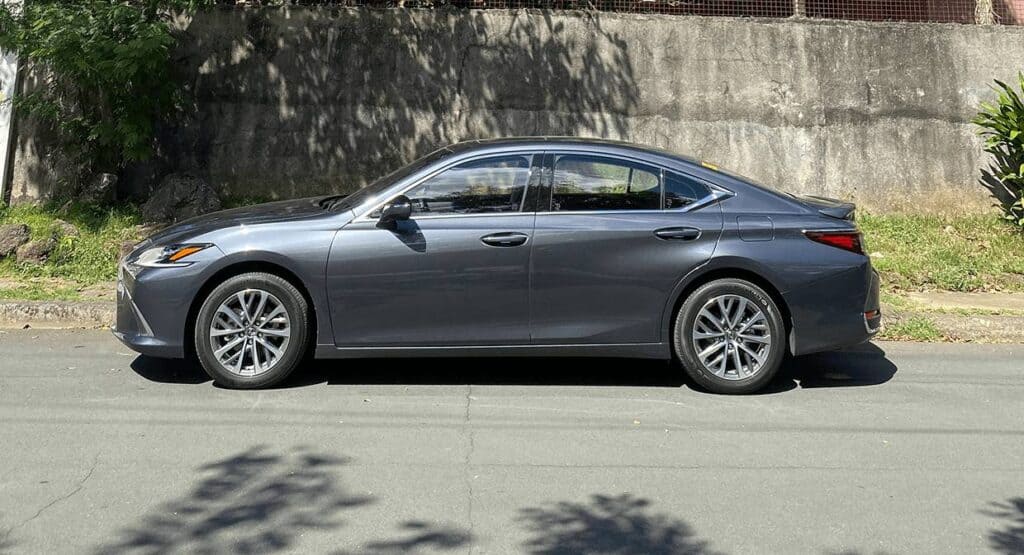Value for money hardly takes pole position in the hierarchy of reasons why people buy a luxury car. Or even any luxury product for that matter.
We buy everyday products because we need them. We buy luxury products because we want them—and, more often than not, regardless of their price. You don’t rationalize value for money when you buy an Hermes bag or a Patek Philippe watch. As Luke Brandon famously said in Confessions of a Shopaholic, “Cost and worth are two different things.”
But there is a luxury item that amazingly delivers solid value for money while appealing to your most sybaritic sensibilities.

That is the Lexus ES 300h Executive. At a time when most midsize executive luxury sedans retail between P4-5 million, the ES 300h Executive has a sticker price of an amazing P3,838,000.
To put that in perspective, the ES 300h is priced roughly the same as the one-size-smaller Mercedes-Benz C180 Avantgarde, a car that competes against Lexus’s smaller IS sedan.
That’s not to say that the ES is moving downmarket—the midrange ES 300h Luxury and the top-of-the-line ES350 Premier have retail prices of P4,218,000 and P4,828,000, respectively—still very much in the midsize luxury sedan price range.

But you see where I’m coming from. It’s almost like you’re getting a two-bedroom unit in a luxury condominium for the price of a one-bedroom unit. Or a midsize Rimowa for the price of a cabin-size one. Simply irresistible.
But is the ES 300h Executive a barebones variant compared to its higher-end siblings? If you need to ask that question, you don’t know Lexus.
Every single model in the current ES line is more spacious, quieter and safer than ever, while delivering a newfound sharpness in dynamic performance that will surprise and delight the most spirited drivers—all while delivering the brand’s trademark levels of class-leading safety and a level of craftsmanship and attention to detail rarely found in this segment.
Every single Lexus ES variant is designed for those who appreciate higher levels of space, comfort and convenience—while offering the sustainable nature of Lexus’ proven hybrid drive technology. Even the “entry-level” ES 300h Executive variant features an elevated level of sophistication that should exceed the expectations of the most discerning luxury-car buyer.

The ES viscerally expresses the Lexus Driving Signature of being more balanced, refined, and confident, thanks to linear steering, effortlessly modulated brake response, and optimized handling, all while delivering the brand’s celebrated ride quality. The secrets behind the ES’ oh-so-supple ride is its ultra-stiff body and chassis, finely tuned suspension, comfort-oriented 215/55R17 Michelin tires, and a rear suspension member brace to further enhance torsional rigidity, handling stability, and riding comfort.
The ES’ brake system has the regenerative and hydraulic brake control characteristics of the Electronically Controlled Brake System (ECB) on the hybrid models, enhancing pedal feel.
The latest ES improves on the quality and elegance that has been well received by ES owners since the first model debuted globally in 1989. The exterior has evolved into one of the most compelling front ends in automobiledom with a sharly rendered iconic spindle grille, sleek and expressive headlamps, and distinctive DRLs, while the interior has adopted interior colors similar to the flagship Premier variant’s. I’ve driven several ES models oveer the years, and their uncanny smoothness, quietness, and refinement have always amazed me.

What was once Lexus’ most conservatively designed model is now a stunningly styled sedan with a sexy couple-like silhouette. The current ES sports fluid lines and a human-centered cabin, where every detail is carefully considered for optimal comfort.
The 2.5-liter inline-4 engine of the ES 300h is equipped with laser-clad intake valve seats, which permit increased airflow into the cylinder and an intake port shape that increases the tumble-flow turbulence of incoming air and fuel for high-speed combustion. The engine also achieves world-leading thermal efficiency, combining robust power delivery with excellent response to deliver superb fuel efficiency. Power and torque are rated at 178hp and 221Nm, respectively. Its 8-speed direct-shift automatic offers smarter and more responsive gear-shifting.
The ES’ hybrid system achieves excellent fuel efficiency (I averaged an impressive 16.7 km/l in mostly city driving) and powerful acceleration due to the its hybrid transaxle with improved efficient internal power flow and a higher-efficiency power control unit.
Its compact hybrid battery is located beneath the rear seats, contributing to ideal weight balance and low center of gravity, while enlarging cargo space. Total system output of the gasoline engine and electric motor is 218hp.
Moreover, with the new 4th-generation hybrid battery, the new ES hybrid electric variants now come with an 8-year HEV battery warranty. It also comes with the standard drivetrain warranty of 3 years or 100,000 kms.
As with every Lexus, safety and security are paramount in the ES. Underneath its svelte silhouette is Lexus’s all-new Global Architecture (GA-K) platform which improves the strength of the cabin to help reduce deformation in the event of a crash; and a Pop-Up Hood System (similar to that in the LS flagship), which, in the event of a pedestrian interaction, deploys the deformable front hood to pop up to reduce the impact of the pedestrian’s head to the windshield.
The ES is also equipped with a Blind Spot Monitor that uses wave radar to detect vehicles present in the adjacent lane blind spots; driver and front passenger front dual-stage airbags and knee airbags. Also included are front and rear side airbags that cover all four seating positions in the vehicle. And to top it off, there are side curtain airbags that cover the front and rear seats on both sides.
All things considered, the Lexus ES is simply one of the finest luxury sedans in the world—bar none. And that’s whether price is an object or not.

